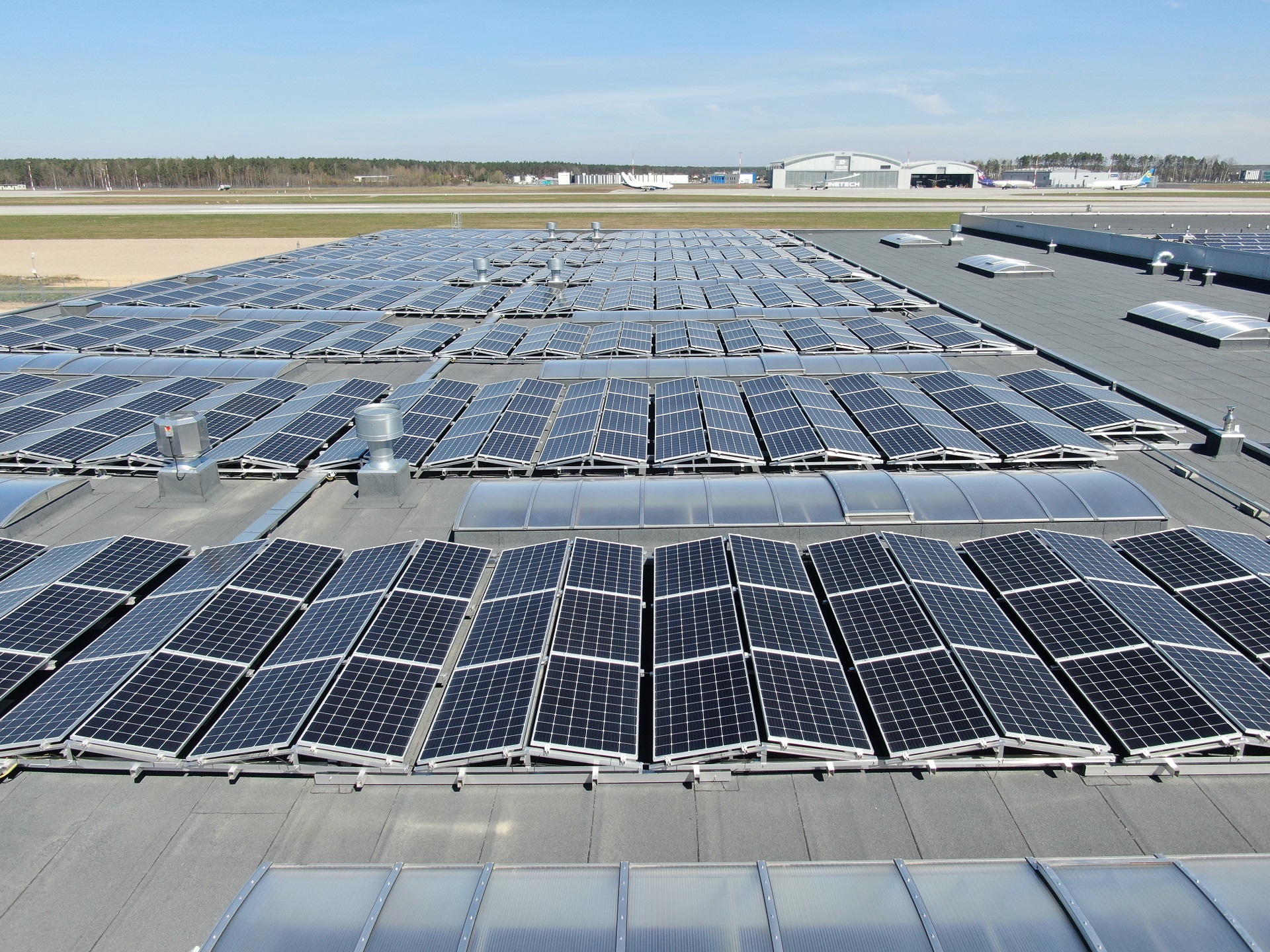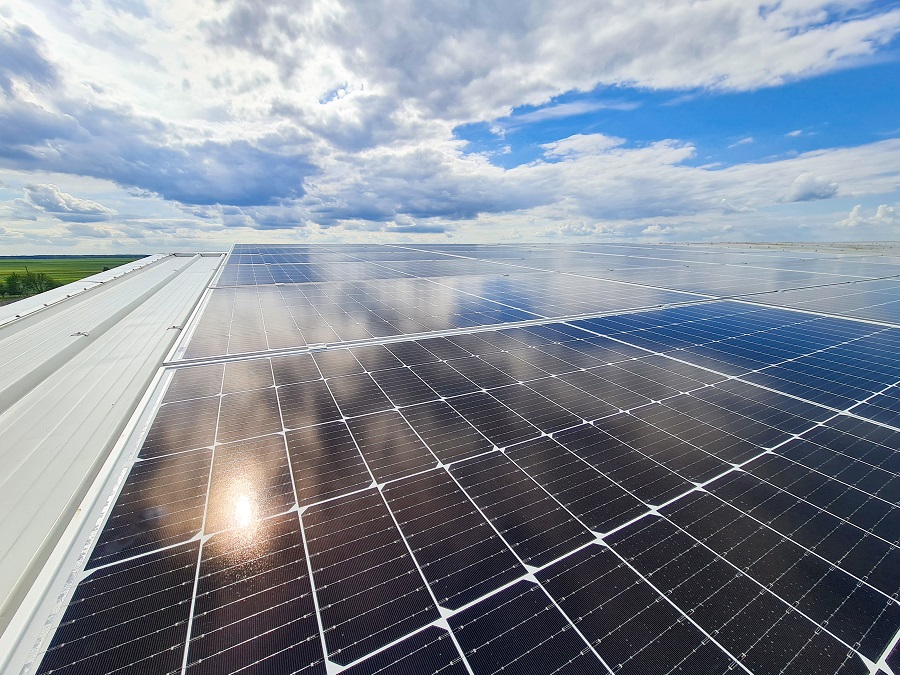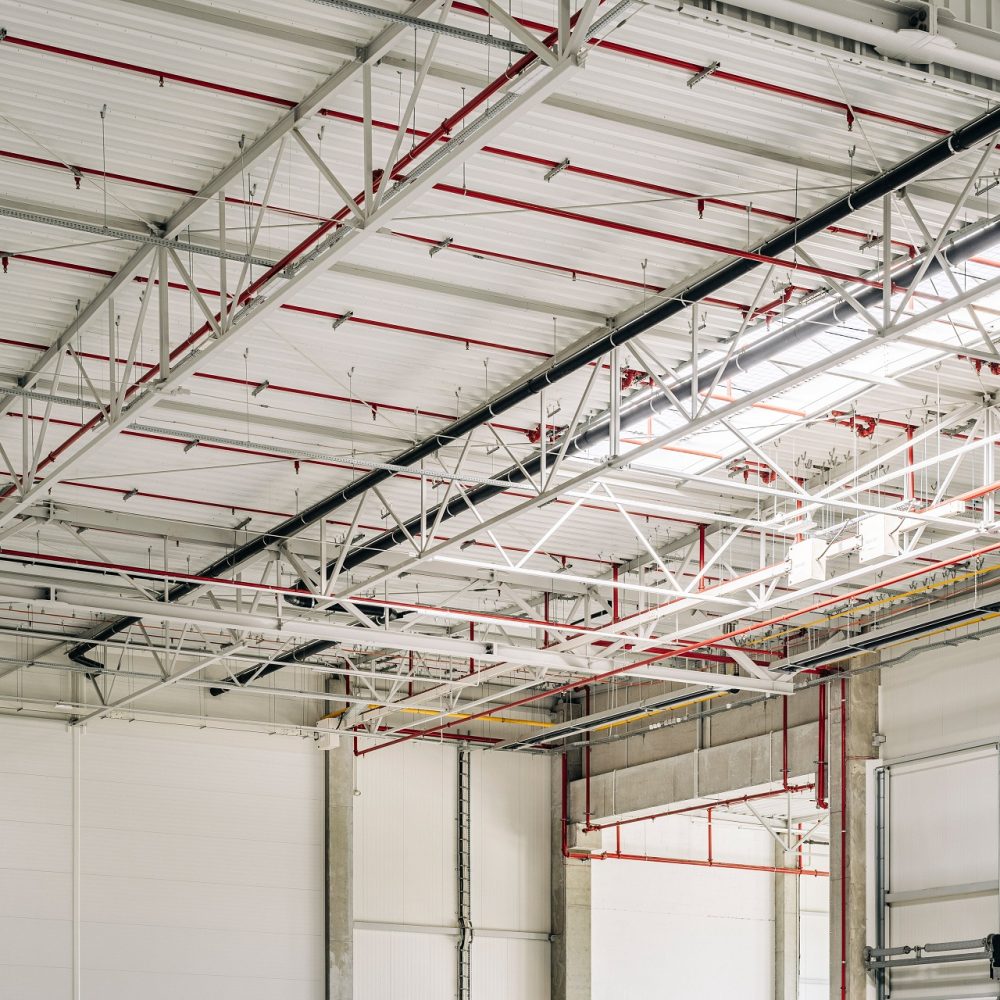
A photovoltaic system is the solution that investors and tenants of industrial halls most frequently ask for in the context of environmentally friendly technologies. And, no wonder, this allows the facility to be powered by green energy, and has a positive impact on the perception of the company by its business environment. What is more, in an era of rapidly rising prices of energy, that sourced from the sun makes it possible to significantly reduce the ongoing cost of building maintenance. Is the installation of photovoltaic panels on the roofs of warehouses and production facilities just a new fashion at the moment or is it already the standard?
The industrial property market is paying increasing attention to ecology, which is one of the three – along with social responsibility and corporate governance – pillars of the ESG strategy. It is being implemented by companies from very different business areas, seeing it as an opportunity for more responsible and sustainable development. And this is exactly what modern industrial construction business in Poland is becoming – socially responsible and sustainable.
Industrial construction in Poland
The total volumes of modern warehousing and manufacturing space in Poland reached 28.3 million sq m by the end of 2022. This is as much as 4.4 million sq m more than just a year ago, i.e. at the end of 2021. It is gratifying not only to see the growth of the industry, but, above all, to see that the buildings being constructed are increasingly in line with the trend of sustainable construction, with particular concern for the protection of natural resources. “The use of sustainable and certified materials in construction, the application of energy-saving solutions and the use of intelligent building management systems are becoming a standard sought by investors and tenants – more and more of them are asking for these types of solutions already at the stage of initial discussions about the architectural design,” points out Rafał Bredow, a constructor at Commercecon, expert in the construction of industrial buildings.
Certification of warehouse and production buildings
Interesting statistics are provided by the Polish Green Building Association. They show that the number of certified industrial and warehouse facilities in Poland has been growing steadily for several years. The report ‘Green Building Certification in Numbers – Report 2017’ showed that their share of the total number of certified buildings was only 9.6%. Today, the situation is very different, with certified industrial and warehouse buildings accounting for 33% of the total[1]. Also noteworthy is the fact that the share of certified warehouse space in relation to total warehouse space has exceeded half for the first time and stands at 55% (the previous period under review indicated 41%).
By far the most popular certification system for industrial buildings in Poland is BREEAM – over 90%. What evaluation criteria are taken into account? These include the energy efficiency and properties of the materials used in the construction and finishing of the building, the location of the building and distance to public transport, how waste, water and sewage are managed, how the land around the building is landscaped and the solutions that have been used to reduce CO2 emissions. Example? Photovoltaic systems. And while the main segment of PV development in recent years has been households, more and more entrepreneurs are considering it for industrial facilities.
PV market in Poland
According to the data on the structure of Poland’s energy mix, presented by the Energy Market Agency (ARE), at the end of November 2022, installed capacity in RES exceeded 22 GW. Photovoltaics had by far the largest share with 11,924 MW (followed by wind power with 7,864.8 MW). Between January and November last year, RES provided around 20 per cent of the energy produced in Poland. “2022 was in line with our expectations. The change in the prosumer law resulted in a dynamic and high growth in sales of domestic systems in the first quarter. Admittedly, this dynamic slowed down considerably in the following months, but the lack of interest among individual customers was filled by the business customer segment. The energy crisis, inflation, ever-increasing energy prices and the uncertain geopolitical situation are all contributing to the accelerated energy transition process. Entrepreneurs, by investing in RES, cut themselves off from these negative factors, become independent and increase the security of their business,” explains Grzegorz Batko, Chief Operating Officer of ML System.
2023 should see sales of PV systems at a higher level than 2022 due to, for example, the aforementioned demand in the SME sector. Legislation related to the climate crisis and the worsening energy crisis facing Europe as a whole are having a major impact on rising demand. Its catalyst is the war in Ukraine, which has resulted in difficulties in sourcing coal, gas and oil. A limited amount of raw materials will continually increase electricity prices. “Renewable energy sources are therefore the only valid way out of this crisis and to ensure security for the future. Our plan for the current year is therefore a natural one – to increase the share of RES in Poland, but also in export sales. We are adequately prepared for the ever-growing market demand,” he adds. And the RES market in Poland is indeed growing. Figures for the first quarter of this year show that the installed capacity of RES has already risen to 23,847 MW, with the capacity of photovoltaic systems alone exceeding 13,000 MW.
General contractors of industrial facilities also have a similar observation. “The extremely difficult situation on the energy market in Poland over the past year has meant that investors planning to build an industrial or warehouse building are increasingly asking us about the technical feasibility and costs of a photovoltaic system. It is worth saying that we have already carried out such projects in the past year” emphasises Rafał Bredow. But the expert points out another important phenomenon – the return of investors to whom Commercecon had already put industrial facilities into use several years ago. “Although they were not interested in photovoltaics during the investment process, they are now seriously considering installing PV panels. Last year, we already happened to perform audits of the building structure to assess the feasibility of installing a photovoltaic system on the roof.” he adds.
PV installation in an industrial facility – why is it worth it?
The use of PV panels to supply a building with energy has benefits on many levels. Undoubtedly the most important is the financial benefit, i.e. a significant reduction in the cost of the electricity consumed. However, it is worth pointing out that it is all about the long-term benefits, although at current energy prices the return on investment has been significantly shortened. “Despite attempts to keep electricity prices at current levels, the cost of purchasing electricity still accounts for a large share of many businesses’ expenses. The most sensible solution is therefore to invest in photovoltaics. The freezing of electricity prices in 2023 has not reduced interest in photovoltaic systems among entrepreneurs, but has instead enabled them to invest in RES without having to incur high fixed costs at the same time,” the ML System expert explains. He also points out that the high level of energy prices last year had an impact on the payback time for a PV system, which remained below three years throughout 2022.

In the current economic situation in Poland, the profitability of photovoltaics is assessed on a long-term basis, so entrepreneurs who decide to invest in a PV system can only gain. And not just financially.
The use of RES translates is beneficial in yet another sphere – it is about the image of the company and how it is perceived by the public. We are becoming increasingly conscious consumers who pay attention to a company’s environmental policy when shopping, choosing products from one that is working to reduce CO2 emissions and reduce its carbon footprint. This attitude can also be seen in the labour market, when selecting a potential employer. Before we decide to apply to an organisation, we are increasingly looking at its sustainability policy.
PV panels on the hall roof – at what stage should a decision be made?
We already know that the benefits of installing PV panels are many. But at what stage in the investment in an industrial facility is it best to decide to install it on the roof? “It is most optimal to take this into account already at the planning stage of the project, at the latest when work on the architectural design of the building begins. The reason for this is simple – the panels, together with the support structures on which they are mounted (this is the case with almost flat industrial hall roofs), will exert an additional load on the hall structure. So it must be adequately reinforced and the roofing adapted to the solutions specified in the design,” explains Rafał Bredow.
This does not mean that PV panels cannot be installed on an already functioning facility. However, as Commercecon’s expert notes, this will require an audit of the strength of the structure and whether it can bear constant additional loading. And here there can be additional costs – firstly for the audit itself, and secondly for the usually necessary structural changes to the roof to bring it into line with the new requirements.
Photovoltaics for business – increasing support for entrepreneurs
Solar energy in Poland is a sector that is growing all the time, and the growth rate of the systems being built puts us in the forefront of Europe. This has been facilitated by various RES subsidy programmes, which in recent years have primarily targeted households. However, the situation is changing – systemic financial support is to increasingly go to the business sector. Green energy is a clean opportunity to develop an innovative and competitive Polish economy. Which programmes will entrepreneurs be able to benefit from? Here are some examples: European Funds for Infrastructure, Climate, Environment (the successor to the Infrastructure and Environment Programme), European Funds for a Modern Economy, Energy Plus (the next edition of the National Fund for Environmental Protection and Water Management programme) or support for local authorities.
Photovoltaics are just one of the solutions that industrial companies can use to reduce CO2emissions. However, note that the planet can be helped not only by using advanced technology. An interesting direction is the environmental approach, i.e. appropriate landscaping around the building and making use of the assets of the location. Rainwater can be reclaimed, trees can be planted to provide shelter from the sun and wind, to help reduce ground evaporation and increase water retention. It is also possible to create green roofs for industrial halls or to set up flower meadows around buildings, putting up boxes and beehives to provide habitats for birds and insects. The green transformation of industrial construction is already happening.
[1] „Zrównoważone Certyfikowane Budynki, Raport 2023”, Polskie Stowarzyszenie Budownictwa Ekologicznego PLGBC (“Sustainable Certified Buildings, Report 2022″, Polish Green Building Council)



